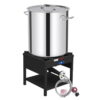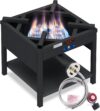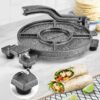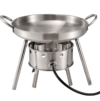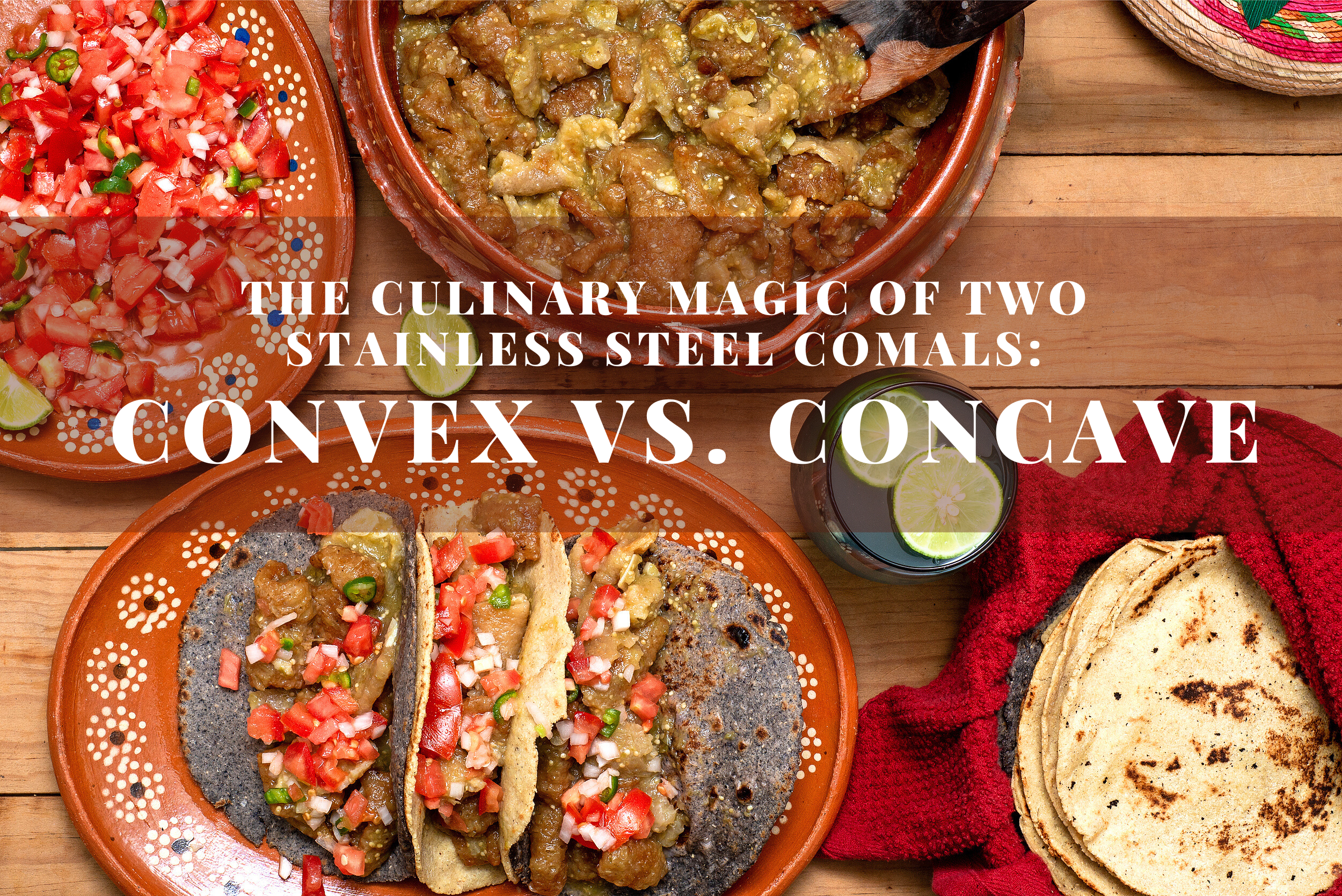When it comes to crafting authentic, mouthwatering dishes, the right cookware is often the key. Today, we’re focusing on two star variants of stainless steel comals—convex-bottom and concave-bottom designs. Leveraging their distinct “center + edge” functions, they effortlessly handle different cooking needs, taking your kitchen creativity to the next level.
I. Convex-Bottom Comal: The “Sizzle Expert” for High-Temperature Grilling
The core advantage of the convex-bottom comal lies in heat concentration at the center and temperature control at the edges. It’s especially ideal for grilling scenarios where you crave that “crispy exterior, tender interior” texture, infusing your ingredients with the smoky charm of street food.
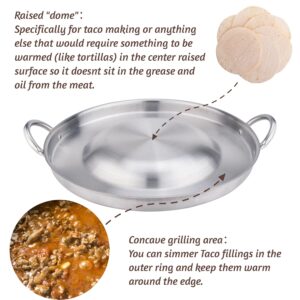
1. Center Area: High Heat Locks in Juiciness, Creating a Crispy Crust
- Core Function: Heat is highly concentrated here, with temperatures 5-10°C higher than the edges. This quickly forms a golden-brown crust on the ingredient’s surface while sealing in internal juices.
- Ideal Scenarios:
- Grilling Meats: For dishes like carne asada (Mexican grilled beef), the high heat creates a crispy, fragrant crust on the beef surface in just 10 seconds. When you bite into it, the inside remains tender and juicy.
- Roasting Vegetables: Place bell peppers, onions, or zucchini in the center—their edges will develop slight charred spots, locking in sweet and spicy juices. It adds an extra layer of charcoal aroma you won’t get from a regular frying pan.
- Pan-Seared Seafood: Shrimp or scallops cooked in the center turn crispy on the outside and remain plump and tender inside, without becoming overcooked and tough.
2. Edge Area: Low Heat for Keeping Warm & Multi-Task Prep
- Core Function: The milder temperature here is perfect for temporarily storing food or slow-cooking, preventing overheating.
- Ideal Scenarios:
- Keeping Cooked Food Warm: Place sunny-side-up eggs or toasted baguette slices on the edges. They stay warm without the yolk solidifying or the bread drying out.
- Batch Cooking: When pan-searing shrimp or dumplings, set the cooked batches on the edges. This frees up the center for new ingredients—no extra plates needed.
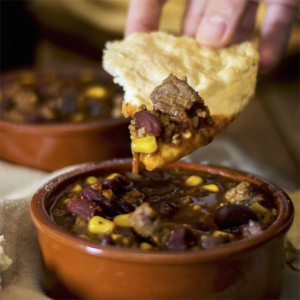
II. Concave-Bottom Comal: The “All-Rounder” for Liquid-Based Cooking
The concave-bottom comal shines with liquid containment at the center and extra space at the edges. It handles sauces and braised dishes with ease, while the edges let you add grilled sides—making an entire meal “one-pan wonder.”
1. Center Area: A Natural “Pocket” for Mastering Liquid Cooking
- Core Function: The concave design forms a natural reservoir, preventing liquid from splattering. It also distributes heat evenly, ensuring ingredients fully absorb the sauce.
- Ideal Scenarios:
- Simmering Sauces: When making tomato meat sauce, the concave center keeps tomatoes, ground meat, and seasonings contained. No splattering oil during cooking, and the sauce thickens gradually with a richer sweet-tart flavor.
- Slow-Braised Dishes: For curries or red bean soup, ingredients settle in the center, fully submerged in broth. After slow simmering over low heat, every bite is packed with the broth’s umami.
- Frying: The narrow bottom design makes frying more oil-efficient. The base retains heat while the wide mouth dissipates it, preventing food from burning.
2. Edge Area: Flat & Spacious for Versatile Grilling
- Core Function: The flat, roomy surface has a moderate temperature, ideal for low-heat grilling of side dishes or breakfast items.
- Ideal Scenarios:
- Making Crêpes/Pancakes: Pour batter onto the edges, spread it thin quickly. Flip once, and you’ll get golden edges and a soft interior. You can cook 2-3 at a time, saving time.
- Frying Fatty Ingredients: Cook sausages or bacon on the edges. The excess oil drips into the concave center, so the food isn’t soaked in grease—lighter and more flavorful.
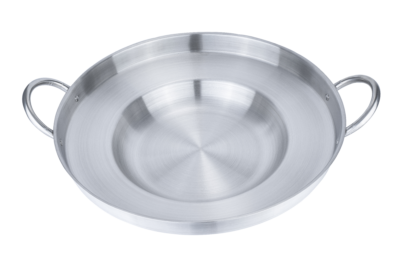
III. Convex vs. Concave: How to Choose? It Depends on Your Cooking Style
Aspect | Convex-Bottom Comal | Concave-Bottom Comal |
Core Advantage | High-heat grilling at center, locks in juiciness and aroma | Liquid containment at center, supports braising + edge grilling |
| Ideal Cooking Scenarios | Pan-searing steak, roasting veggies, batch-cooking seafood | Simmering sauces, braising curries, making crêpes, frying sausages |
| Recommended For | Home cooks who love smoky grills and “crispy-tender” textures | Cooks who often make sauces/braised dishes and want “one-pan meals” |
IV. Final Thought: Why Choose a Stainless Steel Comal?
Whether you pick the convex or concave design, stainless steel adds unbeatable value:
- Fast, even heat distribution—no hot spots or burnt bottoms.
- Scratch-resistant and durable—safe for metal spatulas, built to last.
- Stove-top versatile—works on gas, electric, and induction cooktops, perfect for international use.
If kitchen space allows, having both is a game-changer: Use the concave one for crêpes + soy milk for breakfast, and the convex one for steak + roasted veggies for dinner. They cover all your daily cooking needs, keeping every meal fresh and exciting!

